Creating Unique
Topical Solutions
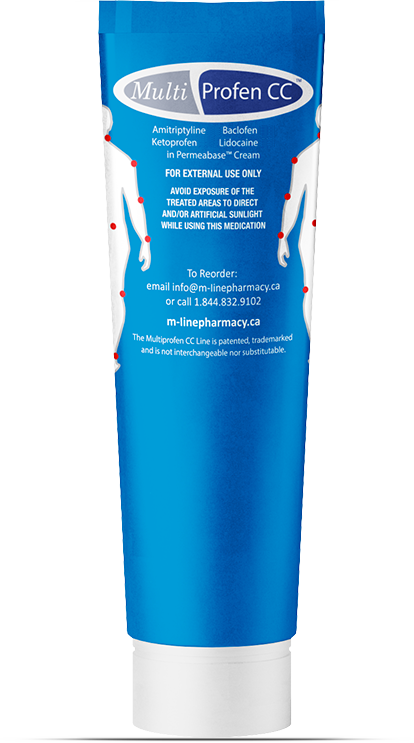
Creating Unique
Topical Solutions
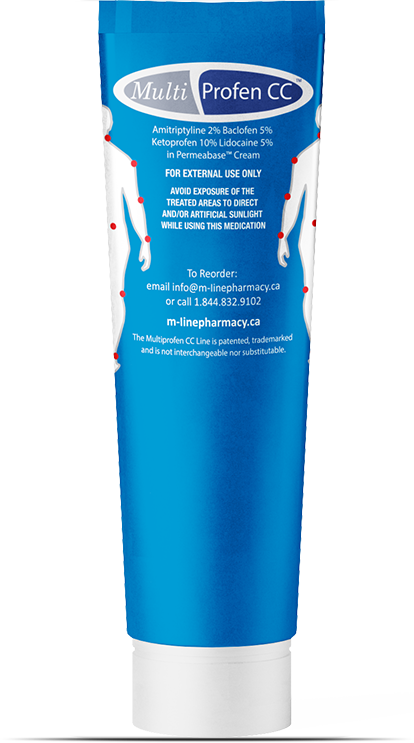

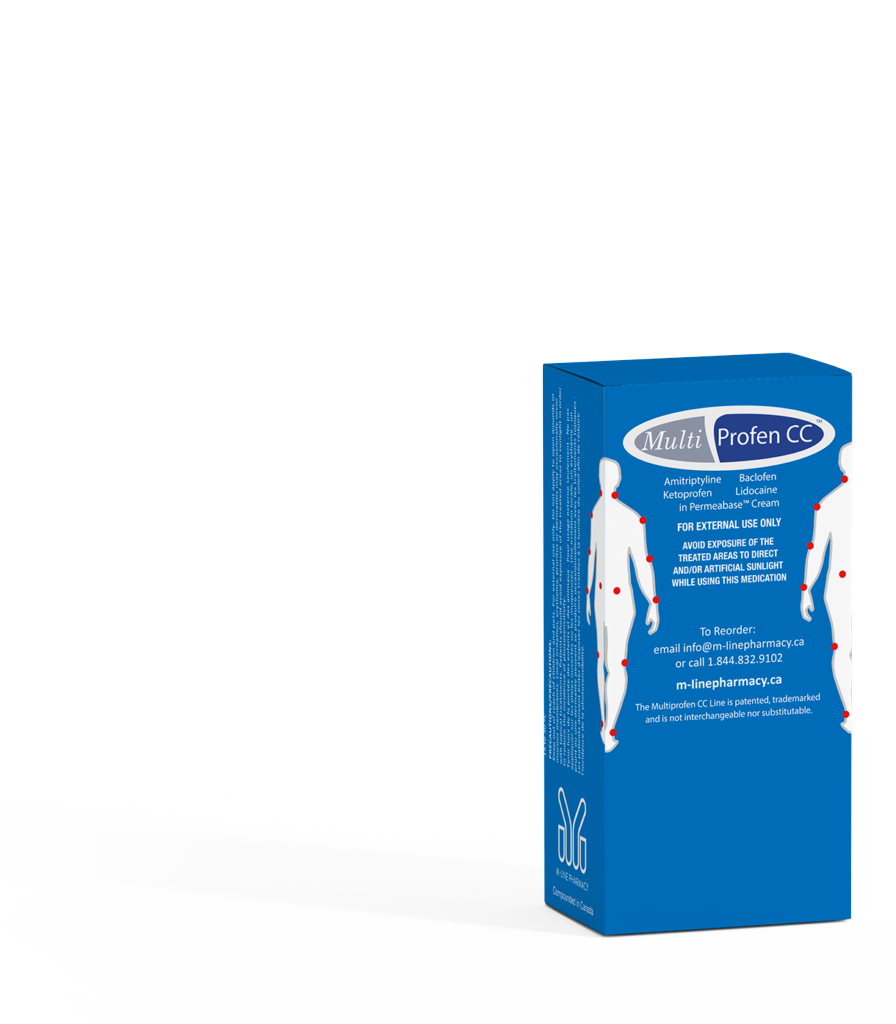
Multiprofen CC™

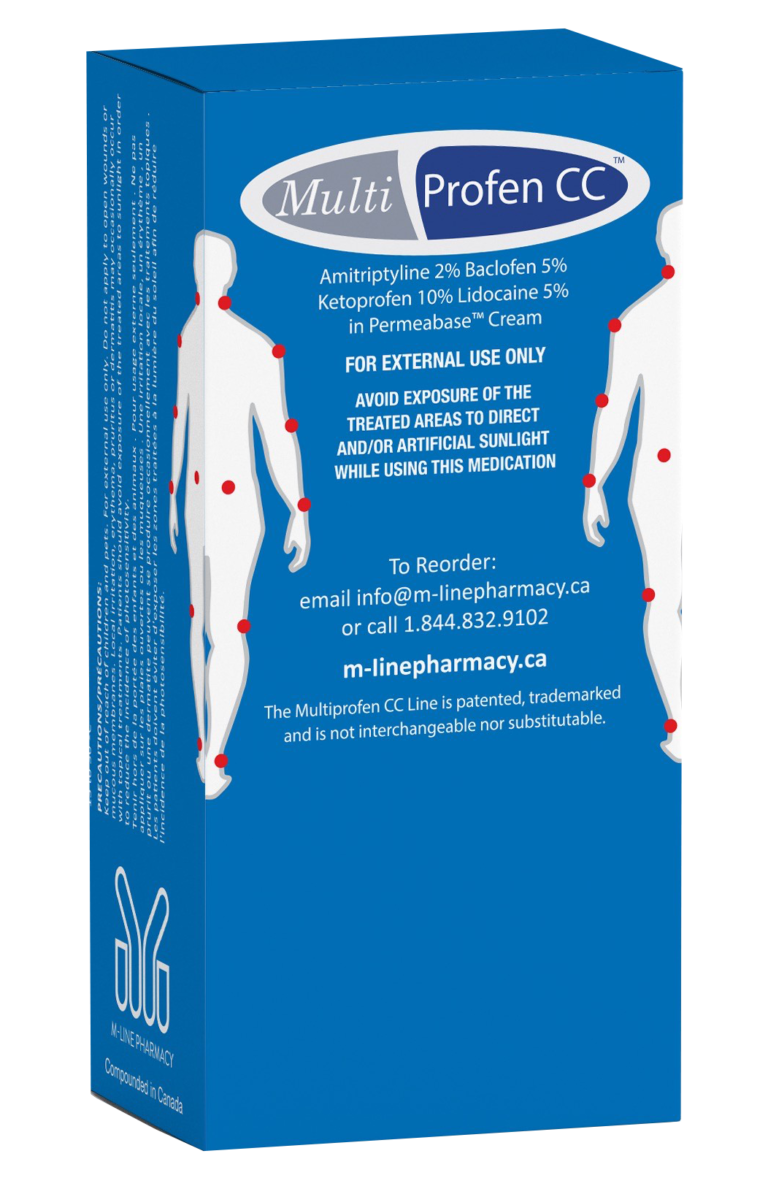

Multiprofen CC™
Application sites:

Where the pain persists
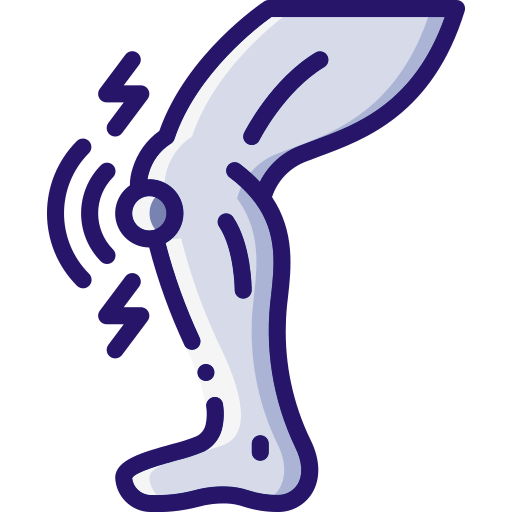
Where the original injury occurred
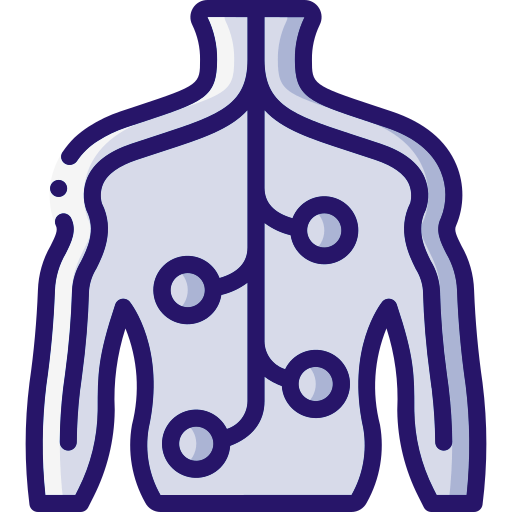
The Dermatome
Click to see dermatome chart

Trigger Points
Click to see trigger point chart


Why Topical?
Topical delivery systems are used to control pain and act locally on damaged or dysfunctional soft tissues or peripheral nerves. They are not absorbed through the gastrointestinal system and do not undergo first pass hepatic metabolism. Less than 5% of the dose that is topically applied reaches the systemic circulation.(Osterwalder et al., 2002) Pain signalling involves complex mechanisms. For neuropathic pain, peripheral activity of afferent nerves is an important contributor to pain. These conditions can benefit from a localized application of topical medications; combinations of agents targeting different pain mechanisms may be particularly useful. It is postulated that topical medications may play a role in desensitizing trigger zones and can reduce peripheral sensibility of areas affected by deafferentation and neuroma formation. (Sardana et al., 2017)Ingredients Include:

AMITRIPTYLINE
Local release of adenosine and activation of adenosine A1 receptors is involved in the action of Amitriptyline, as analgesia is reduced by adenosine receptor antagonists and local administration of Amitriptyline enhances the peripheral availability of adenosine. (Sawynok et al., 1999), (Esser & Sawynok, 2000), (Liu et al., 2000)

BACLOFEN
Baclofen is a GABA agonist myorelaxant possessing presynaptic depressant action at NMDA and non-NDMA receptors. Activation of GABAb receptors by local administration of Baclofen results in a uniform reduction in formalin-evoked behaviours (Zhou et al., 1998), and these receptors may represent a more promising target than GABAa receptors. (Sawynok, 2003)

KETOPROFEN
Topical drug delivery is an extremely useful therapeutic option in many
treatment situations. Topical application of medications has proven to
provide higher therapeutic drug concentrations, while reducing or
eliminating the adverse effects of systematic administration.
The peripheral activity of afferent nerves is an important contributor
to neuropathic pain. These conditions can benefit from a localized
application of topical medications; combinations of agents targeting
different pain mechanisms may be particularly useful. It is postulated
that topical medications may play a role in desensitizing trigger zones
and can reduce peripheral sensibility of areas affected by
deafferentation and neuroma formation (Sardana et al., 2017).
Ketoprofen has anti-inflammatory activities. It is well documented
through numerous trials that Ketoprofen is effective topically.
Ketoprofen applied on the skin is able to enter tissues, reaching
concentrations greater than in plasma, and producing the desired
pharmacological activity, whereas plasma concentrations are too low to
produce systemic activity or side effects. Studies in the literature
have shown that by applying a 100 mg Ketoprofen patch daily directly to
the focus of the painful condition, the concentration of Ketoprofen in
the affected area was anywhere from 6 to 354 times higher than in the
plasma. (Osterwalder et al., 2002).
Topical applications of Ketoprofen allow the attainment of high
intra-articular tissue concentrations, with limited systemic exposure
(Rolf et al., 1999).
Topical application delivered Ketoprofen to the target tissues at a
similar concentration to that observed after oral administration without
a high plasma concentration. Topical application rapidly achieved
effective tissue levels and was maintained for at least 20 hours (Sekiya
et al., 2010).

LIDOCAINE
Lidocaine is a local anesthetic which acts by blocking sodium channels,
preventing nerve depolarization and stopping nerve signals (Heir et al.,
2008).
A randomized, double-blind, vehicle-controlled study demonstrated that
topical Lidocaine reduces the intensity of all common neuropathic pain
qualities and thus may be of potential benefit for nonallodynic
neuropathic pain states (Galer et al., 2002).

Compounding is an activity that is regulated by the Ontario College of Pharmacists. The Health Canada Drug Manufacturers approval process is intended for mass-produced drugs made by drug manufacturers. The Multiprofen CC™ Line of prescription medications are compounded for individual patients. Each ingredient in the Multiprofen CC™ family is approved by Health Canada.


- For External Use Only
- Do not prescribe the product if the patient had an anaphylactic reaction to ketoprofen, other non-steroidal anti-inflammatory drugs (NSAIDs), baclofen, amitriptyline, or lidocaine.
- Contact the pharmacy to remove the active ingredients in question.
- Do not prescribe for those who are pregnant or breast-feeding.
- Do not apply to skin with conditions such as open wounds or cuts, or on skin that has a rash or eczema.
- Do not wrap the skin with an airtight or occlusive dressing. If skin irritation occurs, contact our pharmacist or if not the prescribing practitioner.
- Use with caution in patients with fluid retention or heart failure. Hypertension can occur with oral (tablet) NSAID treatment. Monitor blood pressure closely.
- Use with caution in patients with liver and kidney failure. Monitor lab values.
- Use with caution in patients on blood thinners. Monitor lab values.
- As with all medications, side effects can occur, so please contact our pharmacist should your patient experience any irregular symptoms.


What This Quality Statement Means
For Patients
YOUR PRIMARY CARE PROVIDER SHOULD FIRST OFFER YOU A CREAM TO RUB OVER THE JOINT. If this doesn’t work for you, they may recommend over-the-counter pills (such as low-dose analgesics and/or nonsteroidal anti-inflammatory drugs), prescription pills, or an injection into the joint. Your primary care provider should not offer you an opioid medication as the first or routine treatment for your osteoarthritis pain. These drugs have serious risks including addiction, overdose, and death. For more information, please see our patient reference guide Opioid Prescribing for Chronic Pain
PAIN-RELIEVING MEDICATION OPTIONS • STEPPED APPROACH: #1 – TOPICAL THERAPY FOR KNEE OR HAND; and/or low-dose analgesics and/ or nonsteroidal anti-inflammatory drugs (NSAIDs) for hip, knee, or hand, used as required to relieve symptoms
Credit to:© Queen’s Printer for Ontario, 2018.Title: Osteoarthritis, Care for Adults with Osteoarthritis of the Knee, Hip, or Hand
- Topical Usage
- Compounding
- Health Quality Ontario | Quality Standards
Why Topical?
Topical delivery systems are used to control pain and act locally on damaged or dysfunctional soft tissues or peripheral nerves. They are not absorbed through the gastrointestinal system and do not undergo first pass hepatic metabolism. Less than 5% of the dose that is topically applied reaches the systemic circulation.(Osterwalder et al., 2002) Pain signalling involves complex mechanisms. For neuropathic pain, peripheral activity of afferent nerves is an important contributor to pain. These conditions can benefit from a localized application of topical medications; combinations of agents targeting different pain mechanisms may be particularly useful. It is postulated that topical medications may play a role in desensitizing trigger zones and can reduce peripheral sensibility of areas affected by deafferentation and neuroma formation. (Sardana et al., 2017)

Ingredients Include:

AMITRIPTYLINE
Local release of adenosine and activation of adenosine A1 receptors is involved in the action of Amitriptyline, as analgesia is reduced by adenosine receptor antagonists and local administration of Amitriptyline enhances the peripheral availability of adenosine. (Sawynok et al., 1999), (Esser & Sawynok, 2000), (Liu et al., 2000)

BACLOFEN
Baclofen is a GABA agonist myorelaxant possessing presynaptic depressant action at NMDA and non-NDMA receptors. Activation of GABAb receptors by local administration of Baclofen results in a uniform reduction in formalin-evoked behaviours (Zhou et al., 1998), and these receptors may represent a more promising target than GABAa receptors. (Sawynok, 2003)

KETOPROFEN
Topical drug delivery is an extremely useful therapeutic option in many
treatment situations. Topical application of medications has proven to
provide higher therapeutic drug concentrations, while reducing or
eliminating the adverse effects of systematic administration.
The peripheral activity of afferent nerves is an important contributor
to neuropathic pain. These conditions can benefit from a localized
application of topical medications; combinations of agents targeting
different pain mechanisms may be particularly useful. It is postulated
that topical medications may play a role in desensitizing trigger zones
and can reduce peripheral sensibility of areas affected by
deafferentation and neuroma formation (Sardana et al., 2017).
Ketoprofen has anti-inflammatory activities. It is well documented
through numerous trials that Ketoprofen is effective topically.
Ketoprofen applied on the skin is able to enter tissues, reaching
concentrations greater than in plasma, and producing the desired
pharmacological activity, whereas plasma concentrations are too low to
produce systemic activity or side effects. Studies in the literature
have shown that by applying a 100 mg Ketoprofen patch daily directly to
the focus of the painful condition, the concentration of Ketoprofen in
the affected area was anywhere from 6 to 354 times higher than in the
plasma. (Osterwalder et al., 2002).
Topical applications of Ketoprofen allow the attainment of high
intra-articular tissue concentrations, with limited systemic exposure
(Rolf et al., 1999).
Topical application delivered Ketoprofen to the target tissues at a
similar concentration to that observed after oral administration without
a high plasma concentration. Topical application rapidly achieved
effective tissue levels and was maintained for at least 20 hours (Sekiya
et al., 2010).

LIDOCAINE
Lidocaine is a local anesthetic which acts by blocking sodium channels,
preventing nerve depolarization and stopping nerve signals (Heir et al.,
2008).
A randomized, double-blind, vehicle-controlled study demonstrated that
topical Lidocaine reduces the intensity of all common neuropathic pain
qualities and thus may be of potential benefit for nonallodynic
neuropathic pain states (Galer et al., 2002).
Compounding is an activity that is regulated by the Ontario College of Pharmacists. The Health Canada Drug Manufacturers approval process is intended for mass-produced drugs made by drug manufacturers. The Multiprofen CC™ Line of prescription medications are compounded for individual patients. Each ingredient in the Multiprofen CC™ family is approved by Health Canada.



- For External Use Only
- Do not prescribe the product if the patient had an anaphylactic reaction to ketoprofen, other non-steroidal anti-inflammatory drugs (NSAIDs), baclofen, amitriptyline, or lidocaine.
- Contact the pharmacy to remove the active ingredients in question.
- Do not prescribe for those who are pregnant or breast-feeding.
- Do not apply to skin with conditions such as open wounds or cuts, or on skin that has a rash or eczema.
- Do not wrap the skin with an airtight or occlusive dressing. If skin irritation occurs, contact our pharmacist or if not the prescribing practitioner.
- Use with caution in patients with fluid retention or heart failure. Hypertension can occur with oral (tablet) NSAID treatment. Monitor blood pressure closely.
- Use with caution in patients with liver and kidney failure. Monitor lab values.
- Use with caution in patients on blood thinners. Monitor lab values.
- As with all medications, side effects can occur, so please contact our pharmacist should your patient experience any irregular symptoms.


What This Quality Statement Means
For Patients
YOUR PRIMARY CARE PROVIDER SHOULD FIRST OFFER YOU A CREAM TO RUB OVER THE JOINT. If this doesn’t work for you, they may recommend over-the-counter pills (such as low-dose analgesics and/or nonsteroidal anti-inflammatory drugs), prescription pills, or an injection into the joint. Your primary care provider should not offer you an opioid medication as the first or routine treatment for your osteoarthritis pain. These drugs have serious risks including addiction, overdose, and death. For more information, please see our patient reference guide Opioid Prescribing for Chronic Pain
PAIN-RELIEVING MEDICATION OPTIONS • STEPPED APPROACH: #1 – TOPICAL THERAPY FOR KNEE OR HAND; and/or low-dose analgesics and/ or nonsteroidal anti-inflammatory drugs (NSAIDs) for hip, knee, or hand, used as required to relieve symptoms”
Credit to:© Queen’s Printer for Ontario, 2018. Title: Osteoarthritis, Care for Adults with Osteoarthritis of the Knee, Hip, or Hand
Clinical Trials
Multiprofen™ Moves Forward in Clinical Trials
Exciting news — Multiprofen™ has been approved for use in two Phase 3 clinical trials in Canada. This marks a major step forward in bringing an innovative option for pain relief closer to the people who need it most. These studies will help us better understand how Multiprofen™ can make a difference in everyday life, from recovery after surgery to easing the pain of common conditions. It's all part of our mission to create treatments that are safe, effective, and designed with patients in mind.| Trial Overview | Details |
|---|---|
| Study Title | Phase 3 Blinded Randomized Controlled Trial - Multiprofen-CC™ to Reduce Pain After Total Knee Arthroplasty |
| Regulatory Approvals | Health Canada Clinical Trial Control #: 287614 ClinicalTrials.gov ID: NCT06202989 Click here to read |
| Primary Outcome | Pain Reduction |
| Secondary Outcomes |
|
| Patient Enrollment | Ongoing (288 patients; fully powered for primary outcome measure) |
| Estimated Completion | Winter 2025 |
| Trial Overview | Details |
|---|---|
| Study Title | Phase 3 Crossover Randomized Controlled Trial - Multiprofen-CC to Reduce Pain in Hand Arthritis |
| Regulatory Approvals | Health Canada Clinical Trial Control #: 297848 ClinicalTrials.gov ID: NCT06202989 Click here to read |
| Primary Outcome | Pain Reduction |
| Secondary Outcomes |
|
| Patient Enrollment | Ongoing (88 patients; fully powered for primary outcome measure) |
| Estimated Completion | Spring 2026 |